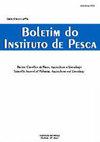土耳其欧洲黑鲈养殖场技术效率分析:随机前沿生产函数方法
IF 0.6
4区 农林科学
Q4 FISHERIES
引用次数: 0
摘要
本研究的主要目的是利用随机前沿方法估计黑鲈养殖场的技术效率,并确定影响生产效率低下的因素。这些数据是在2017年通过对71个农场的问卷调查收集的。计算得出黑鲈生产总成本5.35美元kg-1,收益5.65美元kg-1,毛利0.30美元kg-1。变动成本占总成本的比重(84.25%)高于固定成本(15.75%)。饲料成本(57.56%)是影响总成本的主要变量,效益成本比为1.06。结果表明:各养殖场技术效率在0.67 ~ 1.00之间,平均为0.82;效率得分意味着农场可以通过减少18%的投入来实现相同的产量。转售价值、饲料量和鱼种量增加1%,使鲈鱼产量分别增加0.4%、0.4%和0.2%。鱼类损失率和补贴对效率低下有影响。将鱼类损失率等风险因素降至最低,并开展政治和教育活动,以改善养殖场在养殖和销售方面的基础设施,将是有益的。因此,决策者还应在设计水产养殖补贴政策时考虑到生产要素的有效利用。本文章由计算机程序翻译,如有差异,请以英文原文为准。
ANALYSIS OF THE TECHNICAL EFFICIENCY OF EUROPEAN SEA BASS FARMS IN TURKEY: A STOCHASTIC FRONTIER PRODUCTION FUNCTION APPROACH
This study’s main objective was to estimate sea bass farms’ technical efficiency and determine the factors affecting production inefficiency using the stochastic frontier approach. The data were collected using questionnaires from 71 farms in 2017. The total sea bass production cost was calculated 5.35 $ kg-1, income 5.65 $ kg-1, gross profit 0.30 $ kg-1. The proportion of variable costs (84.25%) in total costs was higher than the fixed costs (15.75%). The feed cost (57.56%) was the influential primary variable on the total costs, and the benefit-cost ratio was 1.06. The results indicated that seabass farms’ technical efficiency varied between 0.67 to 1.00, and the average was 0.82. The efficiency scores meant the farms could achieve the same production amount by reducing inputs by 18%. One per cent increase in resale value, feed amount, and fingerling amount, increase sea bass production by 0.4%, 0.4%, and 0.2%, respectively. Fish loss rates and subsidies were influential on inefficiency. It would be beneficial to minimize risk factors such as fish loss rates and carry out political and educational activities to improve farms’ infrastructure in breeding and marketing. As a result, policymakers should also include the effective use of production factors in the design of aquaculture subsidy policies.
求助全文
通过发布文献求助,成功后即可免费获取论文全文。
去求助
来源期刊

Boletim do Instituto de Pesca
FISHERIES-ZOOLOGY
CiteScore
0.80
自引率
0.00%
发文量
24
审稿时长
>12 weeks
期刊介绍:
To publish original articles of research and short communications in the following áreas: Fisheries, Aquaculture, Zootechnology, Limnology, Oceanography, Biology and Pathology of aquatic organisms. The publication depends on the approval of the Editorial Board, based on the peer review.
 求助内容:
求助内容: 应助结果提醒方式:
应助结果提醒方式:


